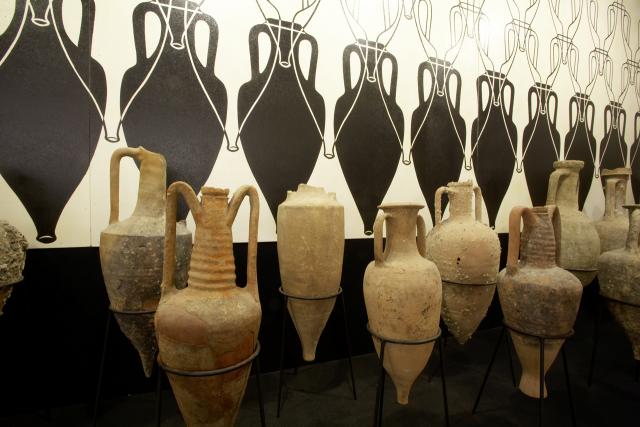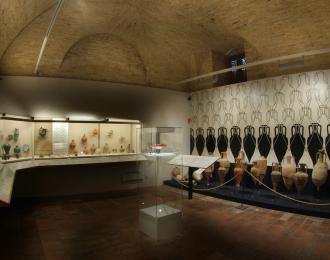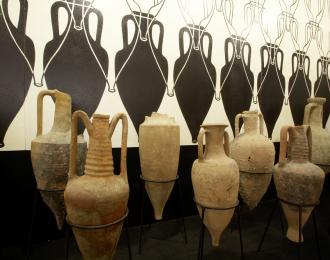Roman wine amphorae
MUVIT – Museum of Wine

Mediterranean wine consumption and commerce
In the 2nd century B.C. a series of great conquests made Rome the central Mediterranean pole that was increasingly frequented on long haul and coastal navigation routes. Merchant sailing ships plied the seas laden with amphorae (containing tax tributes in the form of cereals, wine and oil), to supply cities and armies. The pointed bottoms of wine amphorae made them easier to embed in sand in stowage or the beaten earth floors of wine cellars.
Some amphorae still bear legible kiln markings, less frequent are inscriptions or paintings indicating the wine’s provenance and, usually, the name of the magistrate officiating for that year’s vintage. Once emptied, the amphorae had a variety of uses including as funeral urns, building materials or seagoing lanterns. The stylized cargo on display features Greco-Italic amphorae which were produced in Sicily, Campania and Magna Graecia.

